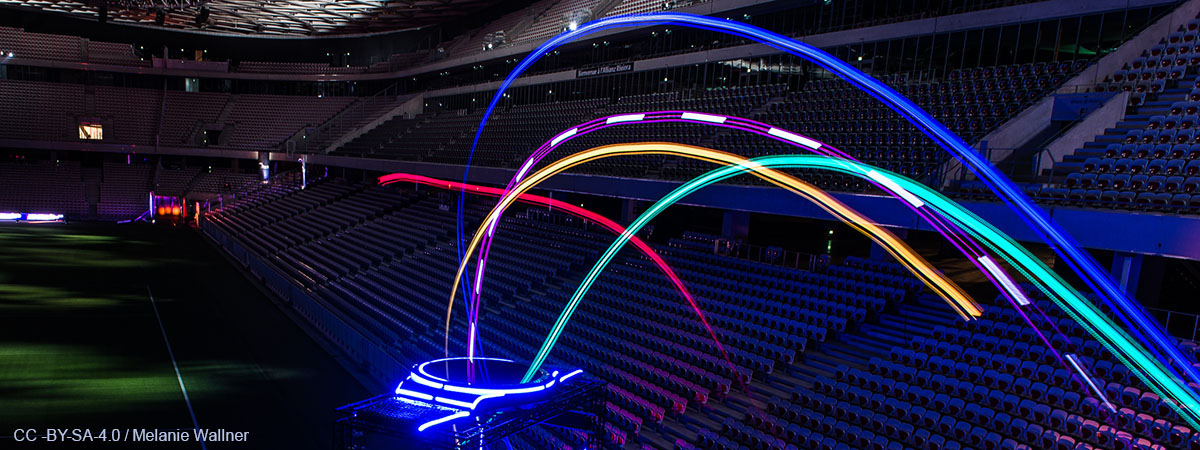Drone Racing, or First-Person-View (FPV) drone racing, is a competitive sport in which drones compete at high speed on circuits filled with obstacles. The participants direct the drones using cameras installed in the drones, which transmit live images to the pilot who can see them on a screen installed in glasses or monitors as if he or she were on board.
Every day, in all sectors of society there are more ways to use drones. One of these, drone racing, is particularly demanding in terms of technology.
As in the case of motor racing, there are competitions all over the world with the competitive element attracting people to the field. Prize money is high, which justifies significant investment in technology. The interesting thing about this new competitive sport is the variety of technological and audio-visual opportunities it creates, fostering creativity in this field with the development of new designs for control systems, power, durability, data transmission, weight reduction, aerodynamics and more.
Let’s talk about some of the most common technical specifications of these drones.
Racing drones can accelerate and manoeuvre with great agility at high speeds due to their light weight. Unlike drones used for video or photography, racing drones are designed to advance as quickly as possible, rather than hover steadily. While camera drones have four motors arranged in an X and evenly spaced, racing drones usually have four motors arranged in an H, designed to propel the aircraft forward rather than upward. Instead of 2 blades, propellers have 3 to 4 blades with a smaller diameter which makes it possible to accelerate more and manoeuvre better.
The controls are extremely sensitive and require a pilot trained to manage the short reaction times.
The sizes of racing drones vary between 180mm with 4” blades for indoor use to 250mm with 6” blades, which are the fastest, that are normally used. However, the 220mm with three 5” blades are preferred for freestyle.
The motors are smaller and more powerful. The fastest drones, weighing just 798g, can complete laps at speeds of close to 290km/hr.
These drones are made of carbon fibre, which is lightweight and strong, able to take fairly heavy blows without damage, thereby increasing profitability.
They have two cameras, one for on-board recording in 4K 60fps resolution, and another for real-time transmission for control with the glasses. There are glasses on the market that can be used both at resolutions of 720p/60 fps and 1080p/30 fps. Some also transmit in 4K when the aircraft is in close range with an extremely low latency of only 40ms.
This camera system is called “First-Person View”, and this low latency creates an experience where the pilot feels as if he or she were actually on the drone, which gives more control than the traditional version. There are even high-end glasses, which incorporate a system that allows you to control the orientation of the on-board camera with just a move of the head.
The latency of the FPV camera processing all the information from the image sensor is an important detail. The faster the processing, the lower the latency and the better the control over the machine. A latency delay of 100ms when the drone is flying at 50mph can mean a drone will travel approximately 2m before the pilot receives the image, thus possibly losing control before the pilot realises it.
The actual bandwidth of the transmitter is an important factor in transmission as higher resolutions require higher bandwidth.
The antennas are located in the lower part of the drone to ensure 360º coverage. Omnidirectional and directional antenna are used together, depending on the location of the drone. This is because the directional antenna gets maximum transmission in one direction and the omnidirectional antenna allows transmission in all directions.
The lenses of these cameras can be changed to choose the field of view (FOV), adjusting to the specific needs of the terrain. Depending on the focal length in millimetres, there will be different viewing angles. If we take into account that the human eye has a focal length of approximately 22 to 24mm, with a horizontal peripheral angle of vision of about 140 degrees with binocular vision, we can achieve superior and inferior angles to human vision with these lenses.
LENS – FOV
1,2 mm – 185 degrees
1,7 mm – 170 degrees
2,1 mm – 165 degrees
2,5 mm – 147 degrees
2,8 mm – 130 degrees
3,0 mm – 127 degrees
4,0 mm – 88 degrees
6,0 mm – 78 degrees
The FPV camera’s image sensor affects its performance. CMOS and CCD sensors are used for FPV cameras. CMOS cameras are usually lighter and use less energy, which is only really important on some micro drones. However, if there are vibrations on board, there is a “Jello effect”, which makes vision difficult. CCD cameras do not have this problem and have a wider dynamic range, so they can work better in bright light and dark conditions.
Most drone pilots use CMOS cameras due to cost and wide availability.
It should also be noted that there are already some 3D FPV cameras consisting of two side-by-side cameras to create the illusion of 3-D while flying, taking the feeling of reality and control to the extreme.
Combining technological innovation with fun has tripled drone sales in the last two years, and many private companies have started to develop new technology. Although initially this increase was slowed down by regulations appearing in different countries, later it rose again due to the professionalization of the sector – which was necessary.
This makes this discipline into a testing ground to continue developing new ideas and innovations that can later become part of larger projects, such as UAS for border control, safety and emergencies, maintenance of facilities, smart cities and so on.
It is very likely that in coming years we see an increase in these technologies in our cities as society will end up accepting them and drones become part of normal, everyday life, as we already see in traffic control, search and rescue, fire control and more.



